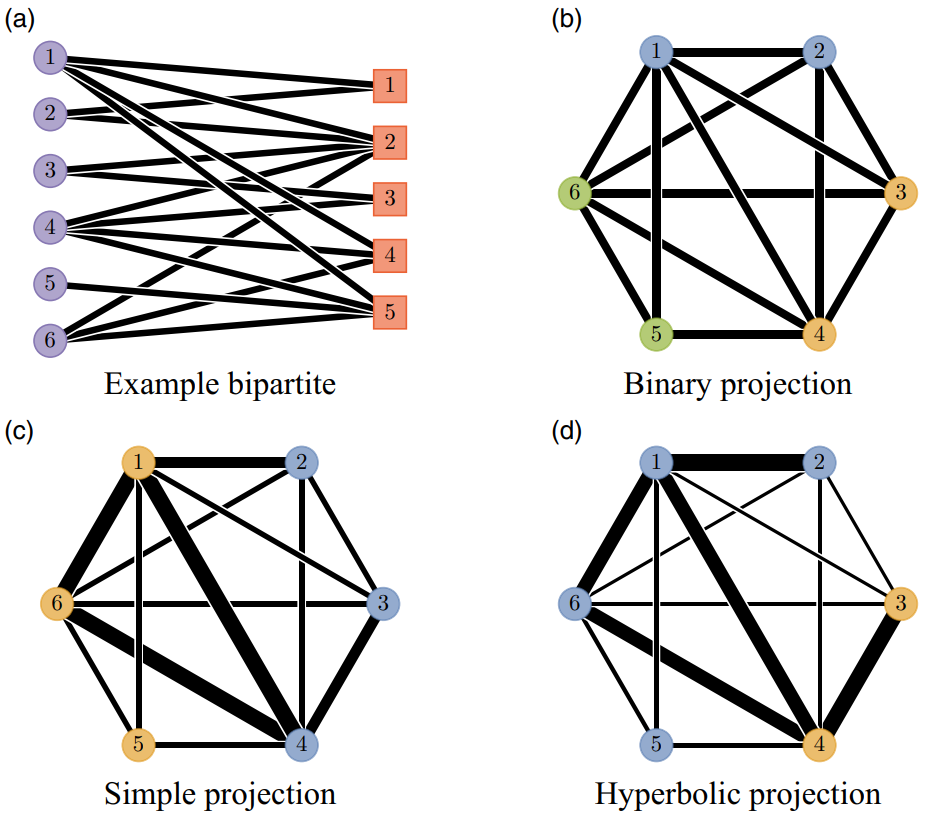Tristan, Iain and Hywel have a new paper published in Network Science.
Bipartite networks represent pairwise relationships between nodes belonging to two distinct classes. While established methods exist for analyzing unipartite networks, those for bipartite network analysis are somewhat obscure and relatively less developed. Community detection in such instances is frequently approached by first projecting the network onto a unipartite network, a method where edges between node classes are encoded as edges within one class. Here we test seven different projection schemes by assessing the performance of community detection on both: (i) a real-world dataset from social media and (ii) an ensemble of artificial networks with prescribed community structure. A number of performance and accuracy issues become apparent from the experimental findings, especially in the case of long-tailed degree distributions. Of the methods tested, the “hyperbolic” projection scheme alleviates most of these difficulties and is thus the most robust scheme of those tested. We conclude that any interpretation of community detection algorithm performance on projected networks must be done with care as certain network configurations require strong community preference for the bipartite structure to be reflected in the unipartite communities. Our results have implications for the analysis of detected community structure in projected unipartite networks.


